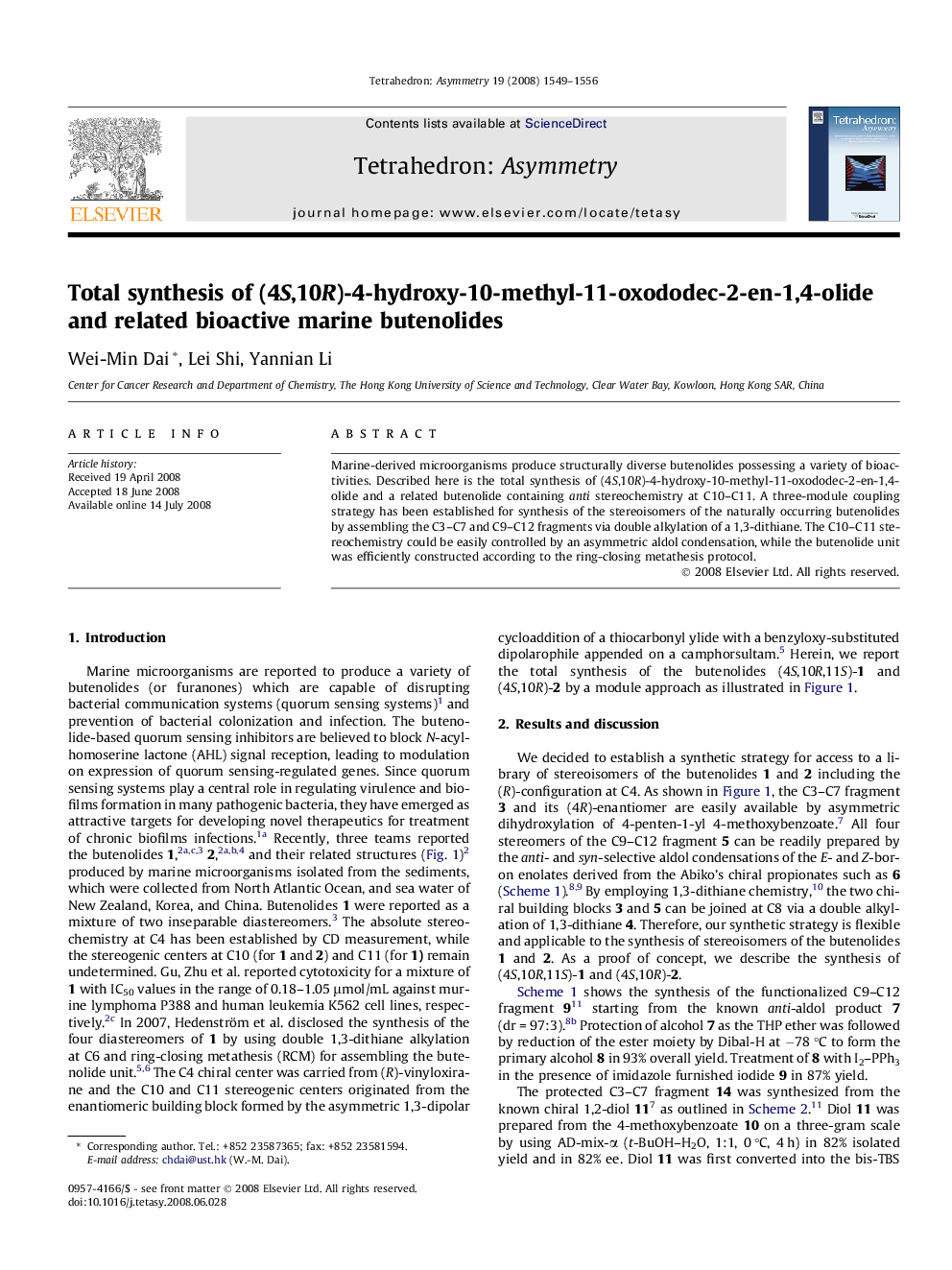| Article ID | Journal | Published Year | Pages | File Type |
|---|---|---|---|---|
| 1347850 | Tetrahedron: Asymmetry | 2008 | 8 Pages |
Marine-derived microorganisms produce structurally diverse butenolides possessing a variety of bioactivities. Described here is the total synthesis of (4S,10R)-4-hydroxy-10-methyl-11-oxododec-2-en-1,4-olide and a related butenolide containing anti stereochemistry at C10–C11. A three-module coupling strategy has been established for synthesis of the stereoisomers of the naturally occurring butenolides by assembling the C3–C7 and C9–C12 fragments via double alkylation of a 1,3-dithiane. The C10–C11 stereochemistry could be easily controlled by an asymmetric aldol condensation, while the butenolide unit was efficiently constructed according to the ring-closing metathesis protocol.
Graphical abstractFigure optionsDownload full-size imageDownload as PowerPoint slide
(4S,10R,11S)-4,11-Dihydroxy-10-methyldodec-2-en-1,4-olideC13H22O3Diastereomer ratio: (4S,10R,11S):(4R,10R,11S) ⩾ 91:9[α]D23=+78.0 (c 0.10, MeOH)Source of chirality: asymmetric reactionAbsolute configuration: (4S,10R,11S)
(4S,10R)-4-Hydroxy-10-methyl-11-oxododec-2-en-1,4-olideC13H20O3Diastereomer ratio: (4S,10R):(4R,10R) ⩾ 91:9[α]D23=+32.0 (c 0.10, MeOH)Source of chirality: asymmetric reactionAbsolute configuration: (4S,10R)
